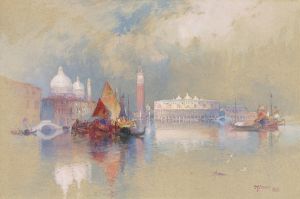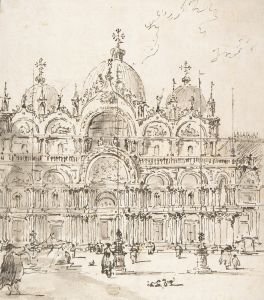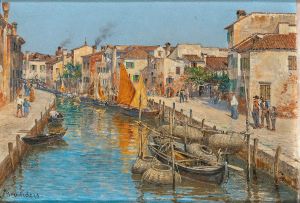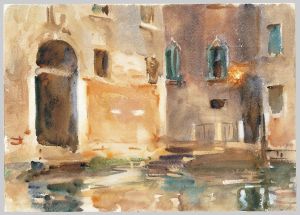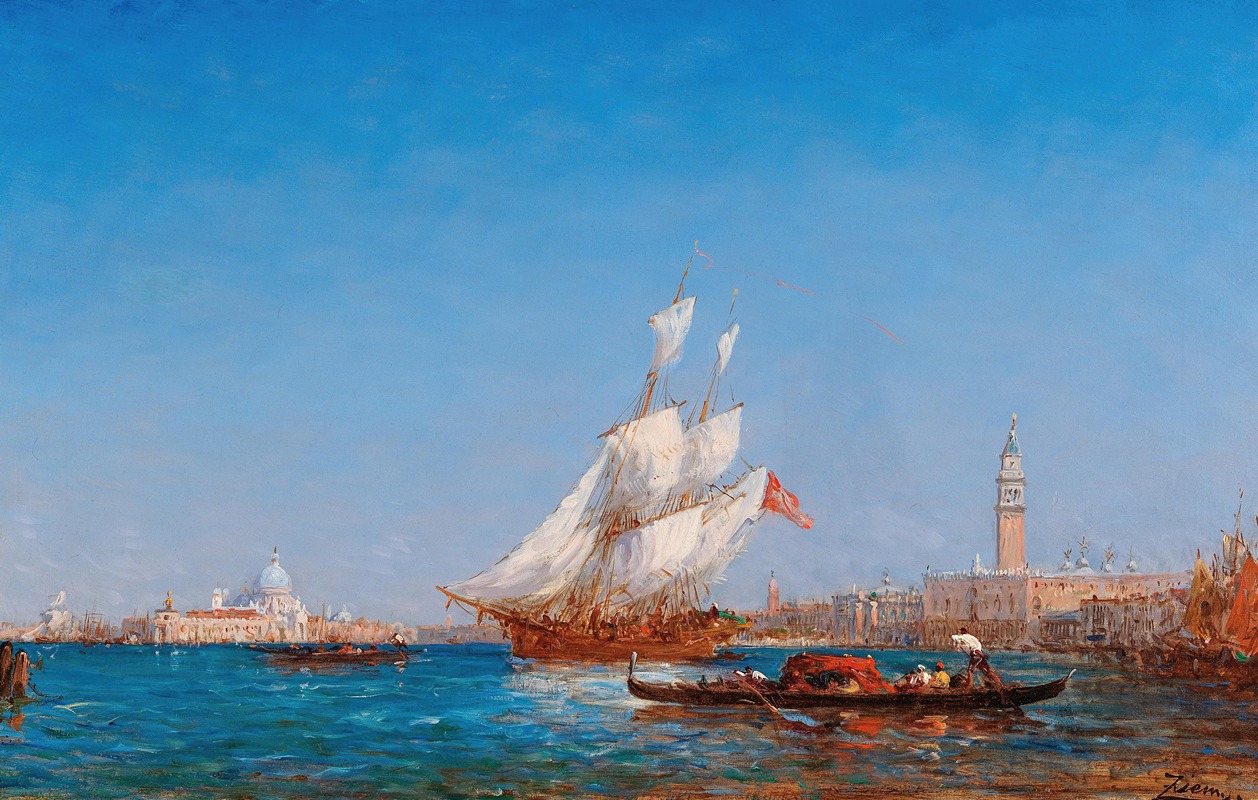
Venice, the Bacino di San Marco
A hand-painted replica of Félix Ziem’s masterpiece Venice, the Bacino di San Marco, meticulously crafted by professional artists to capture the true essence of the original. Each piece is created with museum-quality canvas and rare mineral pigments, carefully painted by experienced artists with delicate brushstrokes and rich, layered colors to perfectly recreate the texture of the original artwork. Unlike machine-printed reproductions, this hand-painted version brings the painting to life, infused with the artist’s emotions and skill in every stroke. Whether for personal collection or home decoration, it instantly elevates the artistic atmosphere of any space.
Félix Ziem was a French painter of the 19th century, renowned for his vibrant and atmospheric landscapes, particularly those depicting Venice. One of his notable works is "Venice, the Bacino di San Marco," which captures the essence of the Venetian lagoon with its bustling maritime activity and iconic architecture.
Ziem was born on February 26, 1821, in Beaune, France. He initially trained as an architect but soon turned to painting, a decision that led him to travel extensively. His journeys took him to Italy, where he became enamored with Venice, a city that would become a recurring subject in his art. Ziem's works are characterized by their lively brushwork and the use of light to create mood and atmosphere, qualities that are evident in his Venetian scenes.
"Venice, the Bacino di San Marco" is a quintessential example of Ziem's Venetian oeuvre. The Bacino di San Marco is the main waterway in front of St. Mark's Square, a central and iconic location in Venice. This area is known for its stunning views of the city's landmarks, including the Doge's Palace and the Campanile of St. Mark's Basilica. Ziem's painting captures the dynamic interplay of light and water, a hallmark of his style, and reflects the vibrant life of the city with boats and gondolas populating the scene.
Ziem's depiction of Venice is not merely topographical but also atmospheric. He was part of the Barbizon School, which emphasized naturalism and the depiction of light. His Venetian paintings often feature a luminous quality, with the interplay of sunlight and water creating reflections and a sense of movement. This approach aligns with the Impressionist movement that was emerging during his lifetime, although Ziem himself is not classified as an Impressionist.
The painting "Venice, the Bacino di San Marco" exemplifies Ziem's ability to convey the unique ambiance of Venice. His use of color and light brings the scene to life, capturing the shimmering reflections on the water and the grandeur of the city's architecture. The composition typically includes a view of the bustling waterway, with various vessels navigating the lagoon, set against the backdrop of Venice's skyline.
Félix Ziem's works, including "Venice, the Bacino di San Marco," were well-received during his lifetime, and he enjoyed considerable success. He was awarded the Légion d'Honneur in 1857, a testament to his standing in the art world. Today, his paintings are held in numerous public and private collections, and he is remembered as one of the foremost painters of Venice in the 19th century.
Ziem's legacy is marked by his ability to capture the spirit of Venice, a city that has inspired countless artists. His works continue to be appreciated for their beauty and technical skill, offering viewers a glimpse into the enchanting world of 19th-century Venice. "Venice, the Bacino di San Marco" remains a testament to Ziem's talent and his enduring fascination with the city of canals.






